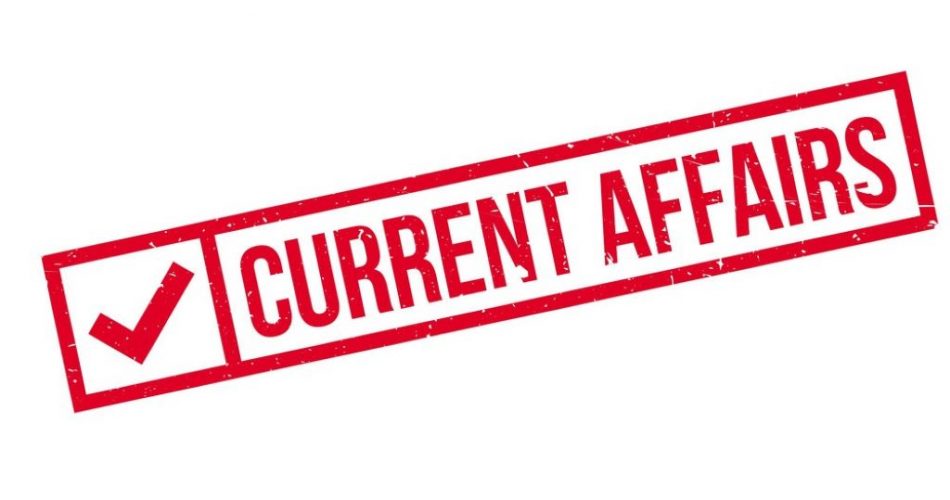Right against Self-incrimination
Theme: Indian Constitution- historical underpinnings, evolution, features, amendments, significant provisions and basic structure.
Source: The Indian Express
Why in news: Earlier, a special CBI judge had granted CBI Sisodia’s custody on the grounds that he had failed to provide satisfactory answers during investigation. The court had rejected Sisodia’s arguments that he had a right against self-incrimination.

What is an individual’s right against self-incrimination?
Background:
- The right against self-incrimination has its origins in Roman law, and evolved as a distinct right in the English jurisprudence.
- The Fifth Amendment in the United States Constitution says “No person shall be compelled in any criminal case to be a witness against himself”.
About Self-incrimination:
- A declaration or an act that occurs during an investigation where a person or witness incriminates themselves either explicitly or implicitly is known as self-incrimination.
- In simpler words, it is the act of implicating or exposing one’s own self to criminal prosecution.
- This right is based on the Latin maxim that ‘No one is obligated to blame himself’.
Right against Self-incrimination in India
- Article 20(3) in Part III (Fundamental Rights) of the Indian Constitution says, “No person accused of any offence shall be compelled to be a witness against himself”.
- The right to be presumed innocent until proven guilty, and the right to remain silent in an interrogation essentially flow from this constitutionally guaranteed right against self-incrimination.
- This right also ensures that police cannot coerce anyone to confess to a crime, and obtain a conviction based on that confession.
How does the right against self-incrimination apply in criminal cases?
- The onus of proving the case against the accused beyond reasonable doubt is on the state.
- Hence, a person cannot be compelled to testify against himself or share information that might go against him in a trial.
The State of Bombay versus Kathi Kalu Oghad 1961:
- The Supreme Court ruled that obtaining photographs, fingerprints, signatures, and thumb impressions would not violate the right against self-incrimination of an accused.
- The court distinguished “to be a witness” from “furnishing evidence”.
Ritesh Sinha versus State of Uttar Pradesh 2019:
- The Supreme Court broadened the parameters of handwriting samples to include voice samples, adding that this would not violate the right against self-incrimination.
Narco Analysis test and collection of DNA:
Selvi vs State of Karnataka 2010:
- The Supreme Court held that a narco analysis test without the consent of the accused would amount to violation of the right against self-incrimination.
- However, obtaining a DNA sample from the accused is permitted. If an accused refuses to give a sample, the court can draw adverse inferences against him under Section 114 of the Evidence Act.
What happened in Manish Sisodia’s case?
- Recently, the CBI told the special court that it would need custody of the Delhi Deputy CM since he was evasive during the interrogation.
- This was opposed by the accused on the ground that the Indian Constitution granted him the right against self-incrimination. Hence, this cannot be a ground for remand.
- In the order granting remand, a judge of the special court sought to differentiate between giving legitimate answers and protecting the right against self-incrimination.
- The judge did not elaborate on what would be counted as “legitimate” answer
On what grounds did the SC reject Sisodia’s plea?
- The SC refused to hear a plea by Delhi Deputy CM Manish Sisodia seeking bail in the excise policy case after a Delhi court remanded him in CBI custody till March 4.
- The apex court disapproved of Sisodia approaching it directly under Article 32 of the Constitution when the remedy of moving the High Court under Section 482 of the CrPC was available to him.
- SC was of the view that the present case pertains to the Prevention of Corruption Act. It does not involve the infringement of Fundamental Rights.
- Hence, the remedy of moving the High Court under Section 482 of the CrPC was available to the accused and the accused can not approach SC directly under Article 32.
Static Part to be referred: Right against Self-Incrimination; Fundamental Rights; Prevention of Corruption Act; Indian Evidence Act;
Practice Mains Question:
| What is meant by the right against self-incrimination? What is the position of the Right against self-incrimination in India? (150 words, 10 marks) |
Also Read: Daily Current Affairs | Manual Scavenging | 27th Feb
Regulation of Online Sale of Drugs
Theme: Government policies and Interventions for development in various sectors
Source: The Hindu
Why in news: In response to the All India Organization of Chemists and Druggists (AIOCD) threatening a country-wide agitation against e-pharmacies, the Ministry of Health pulled up at least twenty companies by issuing them a show cause notice, for selling medicine online.

What is e-pharmacy?
- E-pharmacy denotes the buying and selling of medicines and other pharmaceutical items with the support of a web portal or any electronic mode.
- These are online platforms where consumers can purchase medicines without having to visit brick-and-mortar pharmacies.
What is the Status of the Indian Pharma Sector?
- India is the largest provider of generic drugs globally. It supplies over 50% of global demand for various vaccines, 40% of generic demand in the US and 25% of all medicine in the UK.
- The Indian pharmaceutical market is estimated at USD 40 billion and pharma companies export another USD 20 billion.
- However, this is a miniscule portion of the USD 1.27-trillion global pharmaceutical market.
- Globally, India ranks 3rd in terms of pharmaceutical production by volume and 14th by value.
How is the pharmacy market in India currently shaped?
- India’s Pharmacy market is a fragmented market with over 8 lakh pharmacies
- It gives online pharmacies an opportunity to capture their space without opposing large traditional retailers.
- Currently, companies in the Indian e-pharmacy space mainly operate three business models — marketplace, inventory-led hybrid (offline/online) and franchise-led hybrid (offline/online) — depending on the way the supply chain is structured.
- The acute need for door step delivery of drugs was felt during COVID19.
- The year of 2020 marked a watershed moment for the growth of e-pharmacies as the Ministry of Home Affairs issued orders for them to continue to operate.
- It saw nearly 8.8 million households using home delivery services during lock down.
How are Pharma Sector regulated in India?
Drug and Cosmetics Act, 1940:
- It establishes regulatory control over the import, manufacture, distribution, and sale of drugs and cosmetics in India.
- The Act makes the sale of substandard drugs a serious offence, as these drugs are capable of bringing harm to patients. Under this Act, a jail sentence or fine can be imposed.
Central Drugs Standard Control Organization (CDSCO):
- The act also established the CDSCO for discharging functions assigned under the Drugs and Cosmetics Act.
- The State Health department has to regulate the manufacturing, sales, and distribution of drugs. Drug Inspectors control the implementation at ground level.
What are the rules governing e-pharmacies?
- Currently e-pharmacies are not regulated.
- The draft e-pharmacy rules were floated by the Ministry of Health in 2018, which has not been implemented.
- The rules sought to amend the Drugs and Cosmetics Rules to enable registration of the e pharmacies and monitoring of their functioning.
- In the absence of clear regulations, online pharmacies currently operate as marketplaces and cater to patients as a platform for ordering medicines from sellers that adhere to the Drugs and Cosmetics Act and Rules of India.
- Other regulations, like the Information Technology Act and the Narcotic Drugs and Psychotropic Substances Act, also apply.
What do the draft e-pharmacy regulations propose?
- All the e-pharmacies have to be registered compulsorily with the Central Drugs Standard control organisation.
- Psychotropic substances, habit-forming medicines like cough syrup and sleeping pills, schedule x drugs will not be sold online.
- Apart from registration, the e pharmacies have to obtain a license from the State government to sell the medicines online.
- The application for registration of e-pharmacy will have to be accompanied by a sum of Rs 50,000 while asserting that an e-pharmacy registration holder will have to comply with provisions of Information Technology Act, 2000 (21 of 2000).
- The details of the patient shall be kept confidential and shall not be disclosed to any person other than the central government or the state government concerned, as the case may be.
- The supply of any drug shall be made against a cash or credit memo generated through the e-pharmacy portal and such memos shall be maintained by the e-pharmacy registration holder as record.
- Both state and central drug authorities will be monitoring the data of sales and transactions of e pharmacies. Any violation of rules the registration of e-pharmacies will be suspended, and it can be cancelled too.
- The premises from which e-pharmacy is operated, regular inspections will be conducted every two years by the central licensing authority.
What are the advantages and disadvantages of the E-pharmacies sector?
Advantages:
- e-pharmacies offer discounts, doorstep delivery, accountability in case of delay in services or non-availability of a particular brand or combination of drugs at the click of a button.
- They offer the customers the convenience to compare and select their medicines.
Disadvantages:
- They present stiff competition and threaten the business of traditional pharmacies. Their growth can impact the livelihood of nearly a million chemists, distributors and their employees
- Monitoring of fake and illegal pharmacies could be a challenge and cyber experts need to be employed to tackle such cases.
- A scanned copy of a prescription is not considered authentic under the D&C Act as well as under the IT Act.
- Drug abuse: One prescription can be uploaded on two different e-pharmacy sites, leading to drug abuse. Such multiple dispensing of prescriptions can lead to misuse of drugs and increase the number of drug addicts, especially youth.
Way Forward:
- In an ecosystem that is moving towards a hybrid mode, it is important to regulate the new way of doing e-commerce in the drug space.
Static Part to be referred: Indian Pharma Market; Information Technology Act and the Narcotic Drugs and Psychotropic Substances Act; Drug and Cosmetics Act, 1940
Practice Mains Question:
| E-pharmacies, the popular moniker of online sellers of drugs, are a new phenomenon in this country and their growth is being opposed by the chemists. Critically analyse (250 words, 15 marks) |
Also Read: Daily Current Affairs | Prelims Bits | 27th Feb







